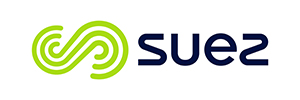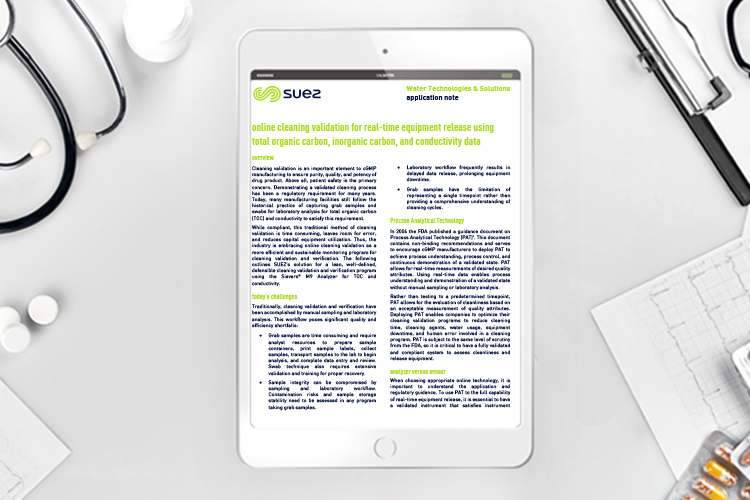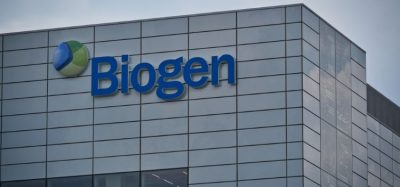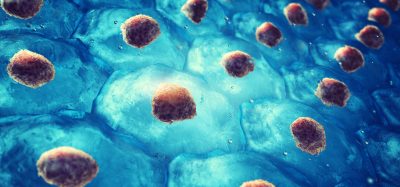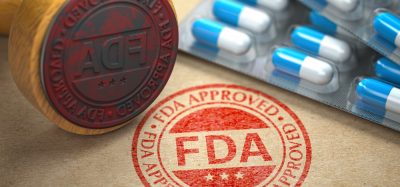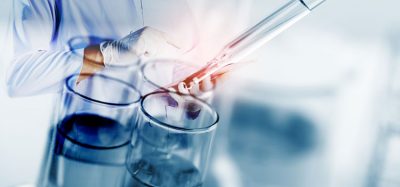Application note: Online cleaning validation for real-time equipment release using total organic carbon, inorganic carbon, and conductivity data
Cleaning validation is an important element to cGMP manufacturing to ensure purity, quality, and potency of drug product.
Above all, patient safety is the primary concern. Demonstrating a validated cleaning process has been a regulatory requirement for many years. Today, many manufacturing facilities still follow the historical practice of capturing grab samples and swabs for laboratory analysis for total organic carbon (TOC) and conductivity to satisfy this requirement.
While compliant, this traditional method of cleaning validation is time consuming, leaves room for error, and reduces capital equipment utilization. Thus, the industry is embracing online cleaning validation as a more efficient and sustainable monitoring program for cleaning validation and verification. The following outlines SUEZ’s solution for a lean, well-defined, defensible cleaning validation and verification program using the Sievers* M9 Analyzer for TOC and conductivity.
today’s challenges
Traditionally, cleaning validation and verification have been accomplished by manual sampling and laboratory analysis. This workflow poses significant quality and efficiency shortfalls:
- Grab samples are time consuming and require analyst resources to prepare sample containers, print sample labels, collect samples, transport samples to the lab to begin analysis, and complete data entry and review. Swab technique also requires extensive validation and training for proper recovery.
- Sample integrity can be compromised by sampling and laboratory workflow. Contamination risks and sample storage stability need to be assessed in any program taking grab samples.
- Laboratory workflow frequently results in delayed data release, prolonging equipment downtime.
- Grab samples have the limitation of representing a single timepoint rather than providing a comprehensive understanding of cleaning cycles.
Process Analytical Technology
In 2004 the FDA published a guidance document on Process Analytical Technology (PAT)1. This document contains non-binding recommendations and serves to encourage cGMP manufacturers to deploy PAT to achieve process understanding, process control, and continuous demonstration of a validated state.
Related organisations
SUEZ



